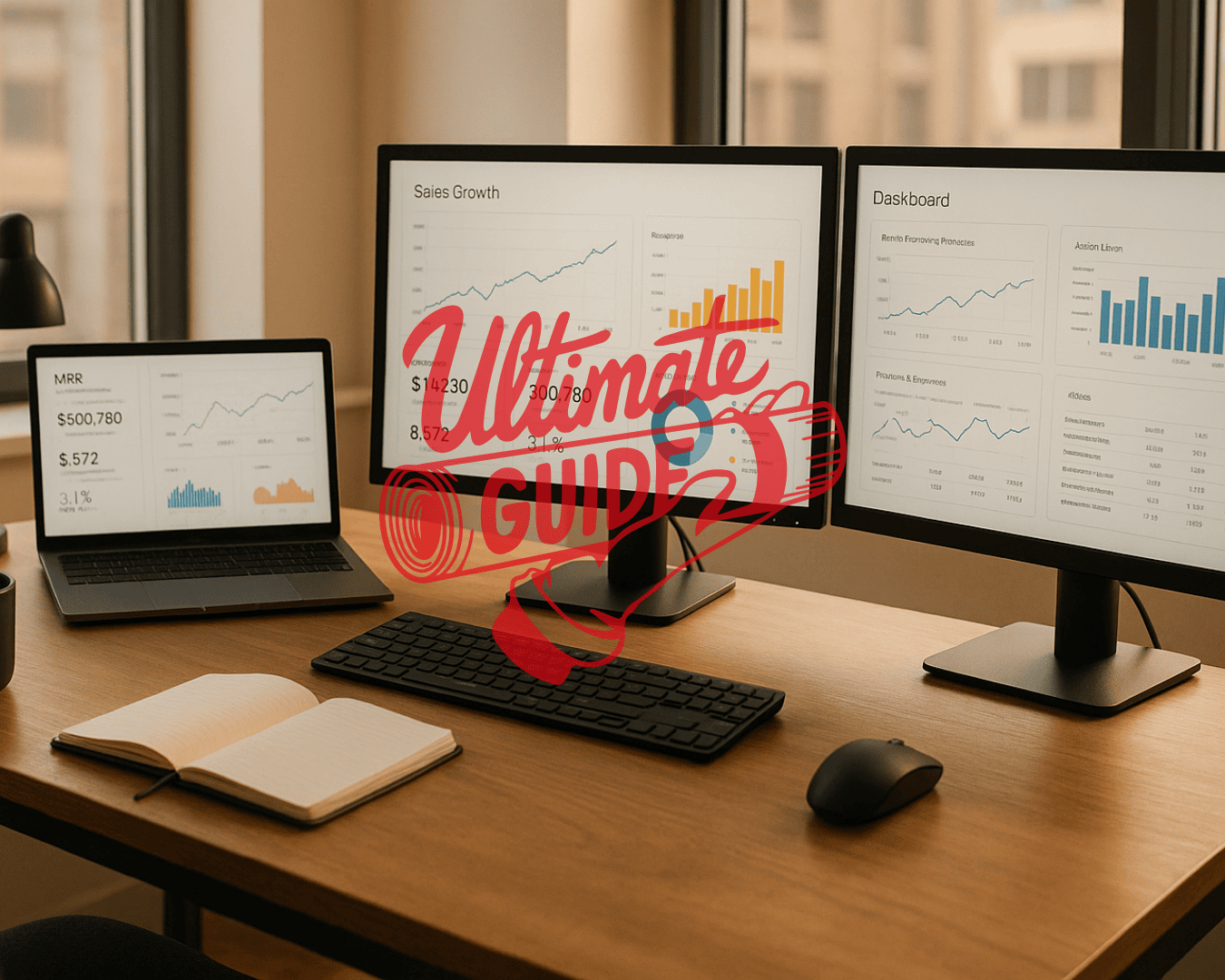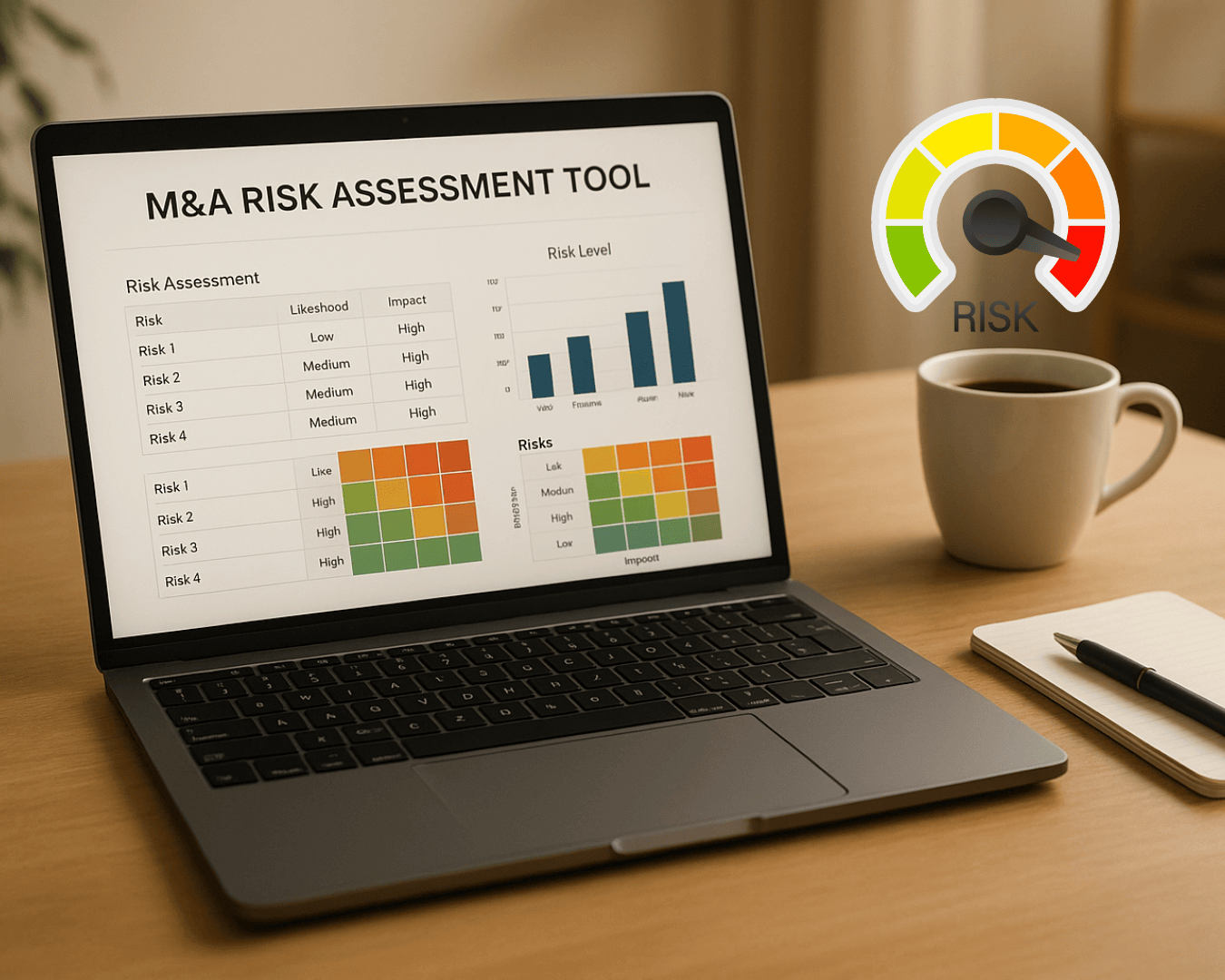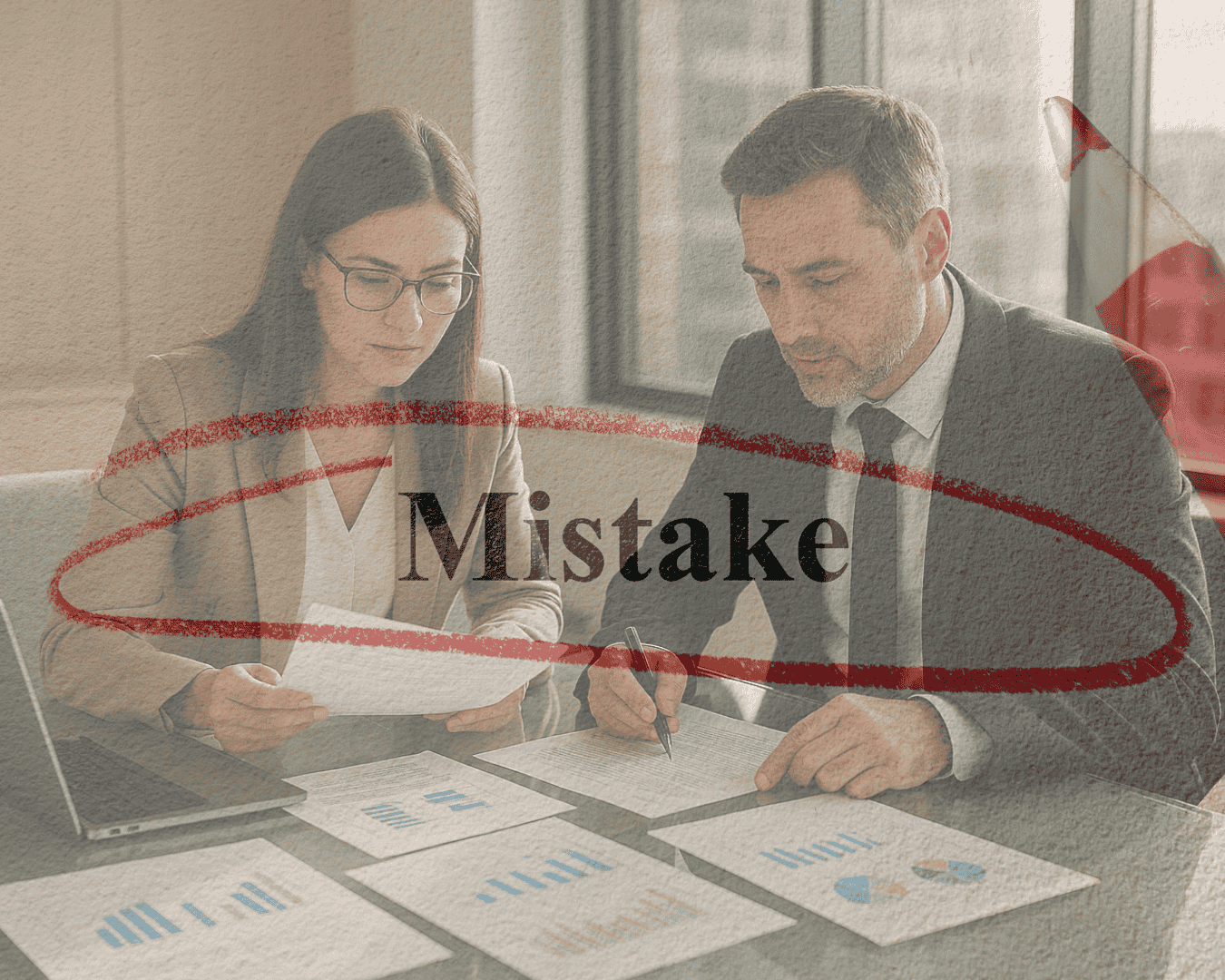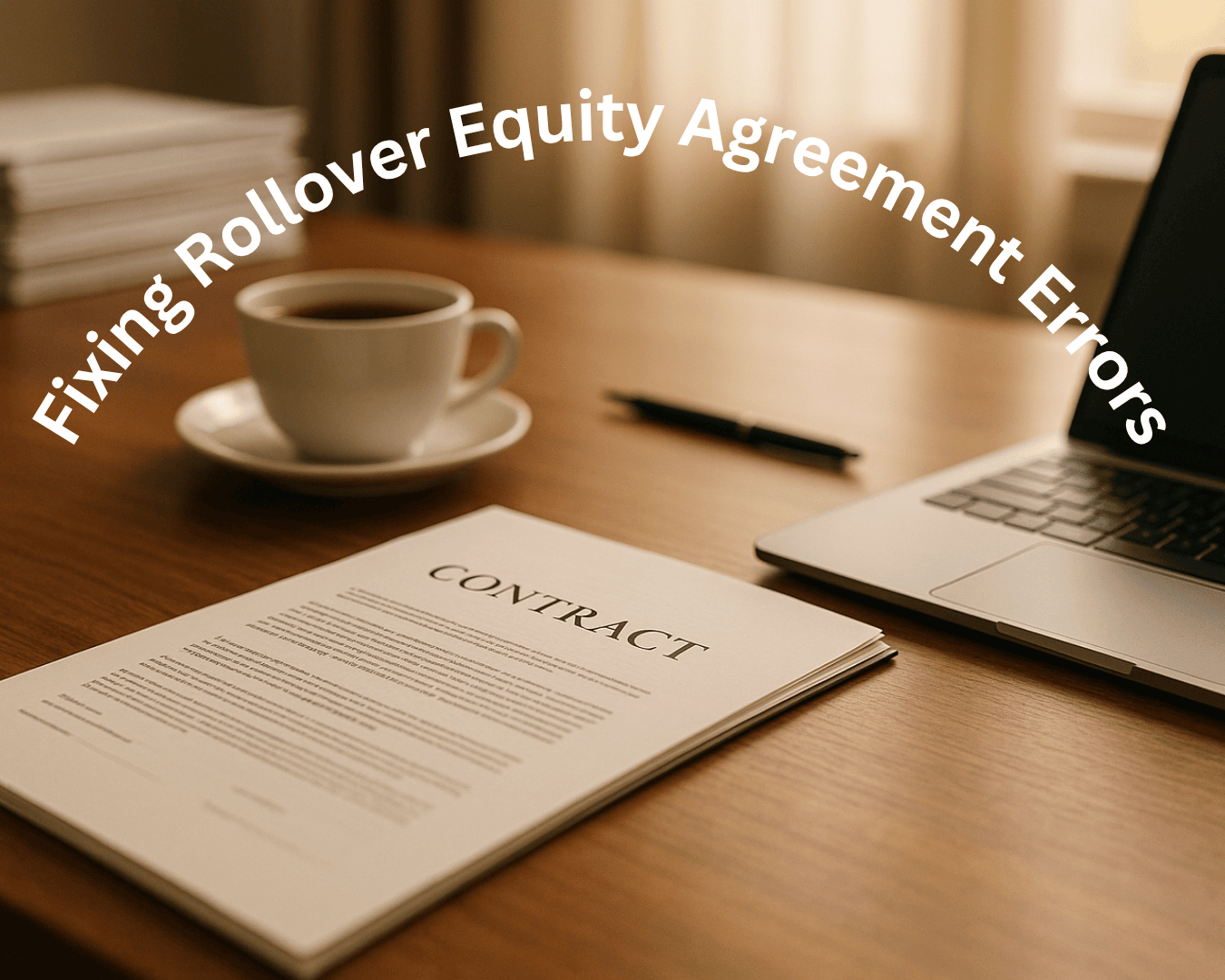When buying a business, you need to evaluate it like a pro to avoid costly mistakes. Here's the key: focus on the financials, market position, and operations. Look for risks like customer dependency, hidden debts, or outdated processes. At the same time, identify opportunities for growth and profitability.
Key steps to evaluate a business:
- Analyze Financials: Focus on metrics like EBITDA or SDE. Adjust for one-time expenses and owner compensation to see true cash flow.
- Understand Market Position: Assess competitors, customer retention, and growth potential. Avoid businesses reliant on few clients or shrinking markets.
- Review Operations: Check for standardized processes, employee dependencies, and supplier risks. Ensure there’s a smooth path for transition.
- Use Valuation Multiples: Apply industry-specific multiples (e.g., 2-4x SDE for small businesses) to determine fair pricing.
- Conduct Due Diligence: Verify financial records, legal compliance, customer contracts, and asset values to spot red flags.
Professional investors rely on structured evaluations, expert tools, and due diligence checklists to make informed decisions. This approach minimizes risks and ensures you're paying the right price for a business with real potential.
How to Value a Business for Acquisition
Analyzing Financial Performance
When reviewing a business, it’s crucial to dig into the financials to ensure the numbers truly reflect daily operations. Profitability isn’t just about showing a profit - it’s about understanding its quality. Experienced investors know that surface-level figures can be deceiving. That’s why they analyze deeper to uncover what the business genuinely earns and how much it’s worth.
A strong profit one year might be the result of a one-time deal, not a recurring trend. To get a clearer view, it’s essential to examine several years of financial data and adjust for anomalies. This detailed approach provides a more accurate picture of what you can expect as the new owner and lays the groundwork for evaluating key financial metrics and recasting statements.
Understanding Key Financial Metrics
The financial metrics you focus on will depend on the size of the business. For smaller operations, Seller’s Discretionary Earnings (SDE) is often the go-to metric because it provides a clearer view of cash flow by adding back the owner’s salary, benefits, and personal expenses. For larger businesses, EBITDA (Earnings Before Interest, Taxes, Depreciation, and Amortization) is typically more appropriate.
Net income can be misleading for small businesses. Many owners reduce reported income for tax purposes by running personal expenses through the company or taking lower salaries in favor of distributions. These practices can distort the true earnings picture.
Cash flow analysis goes beyond just metrics like SDE or EBITDA. It’s about assessing whether the business generates consistent cash month after month. Seasonal businesses, for example, might show strong annual numbers but struggle during off-peak periods. This could mean you’ll need larger cash reserves or access to credit to maintain operations smoothly.
Working capital requirements are another critical consideration. For instance, a retail business might need $50,000 in inventory on hand at all times, while a service-based business might operate with minimal working capital. Understanding these needs helps you calculate the actual cash-on-cash return you can expect.
Recasting Financial Statements
Recasting financial statements involves adjusting them to reflect the business’s performance under normal operating conditions and new ownership. This process often uncovers a business’s true earning potential, which might be hidden in the original statements.
Start by removing one-time expenses and adding back personal costs. For example, legal fees from a lawsuit, relocation costs, or expenses tied to the sale itself should be excluded from operating expenses. Similarly, personal expenses like family cell phone bills or personal insurance premiums that the owner runs through the business should be added back.
Adjustments to owner compensation are also key. If the current owner pays themselves $150,000 annually but a market-rate manager would earn $75,000, you can add back $75,000 to the business’s earnings. On the flip side, if the owner pays themselves $40,000 but works 60 hours a week doing tasks that would cost $80,000 to outsource, you’d need to subtract $40,000 from the earnings.
Depreciation and amortization require careful evaluation. For example, a trucking company might report $30,000 in annual depreciation, but if the trucks are well-maintained and won’t need replacing for several years, that’s cash you can retain. However, if the equipment is nearing the end of its lifespan, you may need to set aside more than the depreciation amount for replacements. Aligning these adjustments with industry valuation multiples helps refine the business’s overall value.
Using Valuation Multiples
Once financials are adjusted, valuation multiples provide a market-based framework for pricing the business. Most small businesses sell for 2-4 times their SDE, while larger businesses typically command 4-8 times EBITDA. However, these ranges vary depending on factors like industry, business size, and specific circumstances.
For example, a trucking company with reliable maintenance contracts might sell at higher multiples due to its predictable revenue streams. Conversely, a restaurant might sell at the lower end of the range due to operational risks. Technology-enabled businesses often attract higher multiples because buyers see opportunities for scalability and efficiency.
Several factors influence a business’s multiple. Companies with strong management teams, documented processes, and diversified customer bases tend to command higher multiples. On the other hand, businesses heavily reliant on the owner’s personal relationships or specialized skills usually fall at the lower end of the range.
Growth trends also play a significant role. A business with consistent 15% annual growth over three years might justify a higher multiple, while one with declining revenues would likely sell for less than the industry average. The key is ensuring that growth is sustainable and not tied to temporary factors.
Asset base is another consideration when applying multiples. For instance, a manufacturing business with $200,000 in equipment might justify a higher multiple than a consulting business with minimal assets, even if their earnings are similar. Real estate ownership can also add significant value beyond operating multiples, especially in regions where property values are rising.
Finally, market conditions impact valuation multiples. High buyer demand and low interest rates tend to push multiples higher, while economic uncertainty or rising borrowing costs can lower them across industries. Understanding the current market environment is essential to determining whether the asking price aligns with realistic expectations.
Evaluating Market Position and Growth Potential
When assessing a business, its market position and growth potential are just as important as its financial health. Investors dig deep into market dynamics to avoid acquiring a company that might be thriving today but could face challenges tomorrow.
Analyzing market position isn’t just about tracking revenue trends. It’s about understanding how the business stacks up against competitors, identifying its advantages, and determining whether those strengths can be maintained over time. Growth potential, on the other hand, helps you figure out whether the business will hold its value or even increase significantly under your ownership. By combining this analysis with financial insights, you get a clearer picture of both the current strengths and future opportunities.
Assessing Competitive Landscape
A key step in evaluating market position is understanding the competitive environment. Start by identifying the business’s direct and indirect competitors within its relevant market. For a local service provider, competitors might be within a 25-mile radius, while for an e-commerce business, they could span across the country - or even the globe. Knowing who the business is up against provides insight into its pricing power, market share, and strategies for standing out.
Competition isn’t always obvious. For example, a traditional accounting firm doesn’t just compete with other firms; it also faces pressure from online tax software, bookkeeping platforms, and financial consultants offering overlapping services. Taking this broader view helps uncover potential threats that might not be immediately apparent.
Customer reviews and online feedback can be goldmines of information. Platforms like Google Reviews, Yelp, and industry-specific review sites reveal how customers perceive the business compared to its competitors. A company with consistently high ratings and positive feedback likely holds advantages worth preserving.
Pricing is another lens through which to evaluate market positioning. If a business charges premium prices and still retains loyal customers, it’s likely offering exceptional value or service quality. On the flip side, if it competes mainly on price, you’ll need to assess whether its cost structure is sustainable or if shrinking margins could pose a risk.
Market share estimation is also useful, even for smaller businesses. While exact data may not always be available, you can estimate market share by comparing revenue to industry averages or the size of the local market. A company with a large share of a small market faces different challenges than one with a smaller share of a larger market.
Keep an eye on industry trends and regulations, as these can shift competitive dynamics. For instance, industries experiencing rapid automation, evolving consumer preferences, or regulatory changes require a closer look.
Barriers to entry play a big role in long-term competitiveness. Industries that demand significant capital, specialized licenses, or long-term relationship building tend to have fewer competitors. For example, a medical practice benefits from licensing requirements and established patient relationships, while a consulting firm with low entry barriers might face frequent competition.
Projecting Future Growth
Just like financial analysis, projecting growth requires a solid foundation of historical data. Look at three-year trends and identify the key drivers behind past performance. A business showing steady 10% annual growth over five years is generally more reliable than one with erratic fluctuations.
It’s also important to distinguish between growth driven by price increases and that driven by customer acquisition or service expansion. Growth fueled by price hikes might not last if competitors offer lower prices. In contrast, growth based on customer acquisition often signals market acceptance and scalability.
Customer concentration is another critical factor. A business that derives 60% of its revenue from one client faces greater risks than one with a diversified customer base. While high concentration can indicate strong relationships, it also raises concerns about stability if that key client were to leave.
Understanding market size and saturation helps set realistic expectations. A business in a growing market with room to expand has different prospects than one in a mature, saturated industry. Reviewing industry reports, demographic data, and economic forecasts can provide valuable context.
Operational constraints can also limit or enable growth. Some businesses may require additional investment in infrastructure, staffing, or technology to scale effectively, while others might be able to grow using existing resources.
Geographic expansion is another avenue to consider. A successful local business might replicate its model in nearby markets. However, expansion requires careful planning, additional capital, and strong management, all of which should factor into growth projections.
Technology and digital transformation offer untapped potential for many businesses. Companies that haven’t embraced digital marketing, e-commerce, or automation could see significant growth by doing so. However, these changes require both expertise and investment, which must be accounted for in your plans.
Seasonal and cyclical trends also play a role in growth planning. For instance, a landscaping business might see strong annual growth but require careful cash flow management during off-seasons like winter. Recognizing these patterns helps with realistic planning and avoids overly optimistic projections.
Finally, industry consolidation can create both opportunities and challenges. If larger players are actively acquiring smaller businesses, your investment might become a target, increasing its value. On the flip side, consolidation could lead to stronger competitors, which might pressure smaller players to adapt or risk losing market share.
sbb-itb-a3ef7c1
Assessing Operations and Risk Factors
Looking beyond financial statements and market trends, diving into a company’s day-to-day operations can reveal hidden risks and weak points. A detailed operational review - examining employee dependencies, process inefficiencies, and supplier vulnerabilities - can uncover potential pitfalls that might not be obvious at first glance. Even a thriving business can become risky if it leans too much on specific individuals, processes, or partnerships that could change unexpectedly.
An operational review helps you see not only what you’re buying but also the risks you might inherit.
Reviewing Business Operations
At the core of any business are its people, processes, and systems. Start by analyzing the organizational structure to see who handles critical tasks. Pay attention to roles that are overly dependent on specific employees or undocumented practices - these can increase risks during a transition.
Companies with well-documented processes tend to manage ownership changes more smoothly. Standard operating procedures (SOPs) are a sign of operational stability, while reliance on unwritten knowledge can lead to complications.
Next, assess the company’s technology systems and supplier relationships. For instance, a manufacturer heavily reliant on one supplier could face major disruptions if that relationship falters. Similarly, businesses tied to specific software platforms, equipment leases, or service providers should have contingency plans in place.
Employee turnover rates and hiring practices also provide valuable insights. High turnover could signal management or compensation issues, while long-term employees with deep knowledge and strong customer relationships can be crucial assets during a transition.
Industry-specific regulatory and licensing requirements are another important factor. For example, medical practices must comply with strict patient privacy rules, while construction companies need proper licenses and safety measures. Understanding these obligations helps you anticipate ongoing costs and risks.
Once you’ve mapped out operational dependencies, the next step is to evaluate how these vulnerabilities translate into broader risks.
Conducting Risk Assessments
Operational risks can arise from various factors, such as customer concentration, regulatory compliance, cash flow patterns, technological gaps, market trends, or inadequate insurance coverage.
Regulatory risks are particularly important. Changes in laws, pending lawsuits, or compliance issues can create uncertainty. For instance, new environmental rules might require costly equipment upgrades, while shifts in labor laws could increase payroll expenses.
"Finally, you must factor in any unique risks or opportunities associated with the business. These could include pending litigation, a single dominant supplier, or, conversely, a groundbreaking new patent or a large untapped market." - Bradyware
Financial risks go beyond what’s shown in financial statements. Businesses with seasonal cash flows need enough working capital to weather slow periods, and those with large accounts receivable could face collection challenges if their customers encounter financial trouble.
Technology risks are becoming increasingly significant. Companies lacking strong cybersecurity measures, backup systems, or modern software are vulnerable to data breaches, system failures, or outdated technology.
Market risks, like changing consumer preferences, economic downturns, or industry disruptions, should also be evaluated. A business operating in a shrinking market or one highly sensitive to economic cycles might struggle to stay resilient over time.
Lastly, review the company’s insurance coverage and liability exposure. Insufficient insurance can leave a business vulnerable to disasters, lawsuits, or accidents. For example, professional services firms may need errors and omissions coverage, while manufacturers require robust product liability insurance.
Using Due Diligence Checklists
To ensure your operational and risk assessments are thorough, use a detailed due diligence checklist. This systematic approach helps uncover potential issues and verify critical information before finalizing a purchase.
Legal and regulatory due diligence involves checking licenses, permits, and compliance records. This includes verifying business registrations, certifications, zoning compliance, and any ongoing legal matters.
Financial due diligence goes beyond reviewing financial statements. Request tax returns, bank records, and detailed transaction histories to confirm the reported performance and identify any discrepancies.
Operational due diligence focuses on key contracts, supplier agreements, and employee arrangements. Review lease agreements, equipment financing, and service contracts to understand ongoing obligations. Employee contracts, non-compete clauses, and benefit plans should also be examined for their impact on costs and transition planning.
Customer verification is equally important. Reach out to major clients to confirm satisfaction levels and contract terms. This can reveal hidden issues, such as pricing disputes or service problems, that might not appear in financial records.
"A skilled advisor goes beyond conducting a valuation - they provide strategic guidance to enhance the value of your business in the eyes of potential buyers. This can involve suggesting actionable steps, such as developing a transition plan to mitigate key person risks, addressing regulatory issues, and determining the optimal timing for a sale." - Axial
Asset verification ensures the reported assets are real and accurately valued. This includes physical inventory counts, equipment inspections, and real estate appraisals. Intellectual property verification, such as checking trademarks, patents, and software licenses, is also crucial.
Given the reliance on digital systems, technology due diligence has become essential. Verify software licenses, data security protocols, backup systems, and the condition of critical equipment. This helps you plan for potential upgrades or replacements.
Finally, create a timeline for due diligence to manage the process efficiently. Some tasks, like environmental assessments or detailed financial audits, may require more time and should be prioritized early, while final contract reviews can be completed closer to the closing date.
Using Professional Tools and Expert Support
After conducting a detailed financial and operational review, the next step is to enhance your evaluation strategy with professional tools and expert guidance. AI-powered valuation platforms and experienced advisors can accelerate the process while providing access to market data that might otherwise be difficult to obtain. These tools not only improve precision but also help simplify complex transactions.
Using Valuation Tools
AI-driven valuation platforms have revolutionized how businesses are evaluated. By analyzing financial data, comparing industry benchmarks, and incorporating market trends, these tools can generate valuations quickly and effectively. For example, Clearly Acquired's AI-driven business valuation tool combines financial metrics, industry data, and market trends to deliver precise and timely valuations. The platform integrates with systems like Plaid for financial verification, making it easier to input key metrics and receive comprehensive valuation reports. This allows you to spend less time on calculations and more time on thorough due diligence.
While automated tools are incredibly efficient, the insights of an expert can add another layer of depth to your evaluation process.
Working with Advisors and Brokers
Seasoned brokers and M&A advisors bring valuable market knowledge and local expertise to the table. They can simplify negotiations, help screen potential opportunities, and provide key intelligence about market conditions. With their guidance, you can ensure seller expectations align with reality and that your offers are competitive. Advisors with industry-specific experience are particularly helpful in identifying risks and avoiding common mistakes early in the process.
Using Integrated Acquisition Platforms
Integrated acquisition platforms take things a step further by combining valuation, deal sourcing, and transaction management into one seamless system. Platforms like Clearly Acquired offer a comprehensive approach, bringing together all the tools you need for a smooth acquisition process.
These platforms provide access to both public and private business listings, along with off-market search tools for unique opportunities. Financing is made easier through integrated loan marketplaces, which include acquisition pre-qualification supported by financial verification. Secure data rooms with permission controls streamline document sharing during due diligence, while pipeline management tools help you stay on top of deadlines, document needs, and communications for each deal.
For those pursuing larger transactions, features like investor and co-investor matching can help you find the right partners. Additionally, educational resources such as market trend reports and financing guides keep you informed about the latest best practices and market dynamics.
Key Takeaways
Let’s break down the essentials from the financial, market, and operational reviews discussed earlier. A professional business evaluation requires a structured approach that combines detailed analysis, expert tools, and strategies to minimize risks.
Steps for Effective Business Evaluation
The first step in a professional evaluation is to analyze and, if needed, adjust multi-year financial statements. This is followed by applying relevant industry valuation multiples. When it comes to revenue, quality matters as much as quantity. Businesses with recurring revenue streams and a broad customer base are typically valued higher than those relying heavily on a small number of major clients.
Next, focus on market positioning. This involves evaluating the company’s competitive edge, customer diversity, and growth potential. Whether the business operates in an expanding, stable, or shrinking market plays a big role in shaping future cash flows and potential exit strategies. Look for businesses that have a strong foothold in their market, whether through brand recognition, customer loyalty, or operational advantages.
Finally, operational efficiency is key. Examine the depth of the management team, the existence of documented processes, and the scalability of operations. Companies with experienced management teams and well-structured operations generally present lower risks and ensure smoother transitions after an acquisition.
To strengthen your evaluation, leverage expert tools and insights. AI-driven platforms can process financial data and industry benchmarks quickly, while experienced brokers offer valuable market intelligence that’s hard to gather on your own. These resources help validate your findings and uncover any blind spots.
Making Confident Purchase Decisions
Following the outlined steps leads to better purchase decisions. Confidence comes from cross-checking financial data with qualitative insights. Throughout the evaluation, keep an eye on risks - like customer concentration, regulatory changes, or technological shortcomings - and develop strategies to address them. The goal isn’t to eliminate risks entirely (that’s impossible) but to understand them and price them appropriately.
Risk assessment should remain a priority. Create a detailed list of identified risks and outline specific plans to address each one. This ensures that you’re prepared for potential challenges and can make informed decisions.
Financing considerations are another critical piece of the puzzle. Knowing your financing options early on allows you to act quickly when the right opportunity arises. Many acquisition financing programs have requirements, such as specific debt-to-income ratios or down payment percentages. Being clear on these parameters helps you target businesses that fit your financial capabilities.
A consistent and streamlined evaluation process allows you to spot businesses with strong fundamentals and risks you can manage. This approach ensures thorough due diligence while enabling you to act decisively when opportunities present themselves.
Professional investors understand that no business is perfect. The key is identifying companies with solid foundations, manageable risks, and room for improvement - especially in areas that align with your expertise and resources. By following a disciplined evaluation process, you can confidently move forward, knowing you've done the necessary work to make an informed decision.
FAQs
How can I tell if a business's growth potential is long-term and not just a short-term trend?
To determine whether a business has the potential for sustainable growth, it’s essential to start with a close look at its historical financial performance. Consistent trends in revenue and profits can provide a solid foundation for evaluating its stability and growth trajectory.
Next, take a broader view by analyzing industry trends. Is the business operating in a market that’s expanding or at least holding steady? Understanding the health of the industry can offer valuable insights into future opportunities or challenges.
The company’s competitive position is another critical factor. This includes evaluating its market share, what sets it apart from competitors (its unique value proposition), and any barriers that make it difficult for new players to enter the market. A strong competitive position often signals resilience and room to grow.
Don’t forget to factor in macroeconomic conditions. Economic shifts - like changes in interest rates, inflation, or consumer behavior - can have a long-term impact on the business’s viability. Tools such as discounted cash flow models or industry benchmarks can be particularly useful for projecting future performance and assessing whether growth is likely to remain steady.
Finally, look for evidence of strategic planning and operational scalability. Businesses with clear, forward-thinking strategies and the ability to scale their operations efficiently are often better positioned to achieve and sustain long-term success.
What key risks should I watch for when doing due diligence on a business for sale?
When performing due diligence, it's essential to uncover potential risks that could affect the business's value or long-term success. Here are some common areas to scrutinize:
- Inflated financial performance: Look out for exaggerated revenue figures, undisclosed expenses, or inconsistent financial statements that may paint an inaccurate picture.
- Undisclosed liabilities: Be on the lookout for unreported debts, pending legal actions, or unresolved tax issues that could become your problem later.
- Market or industry hurdles: Evaluate whether the business operates in a shrinking market or faces stiff competition that could hinder growth.
- Operational weaknesses: Pay attention to outdated processes, inefficient management systems, or high employee turnover rates that could disrupt operations.
- Legal and regulatory compliance: Verify that the business adheres to all relevant laws, holds necessary permits, and meets regulatory standards.
- Overreliance on the owner: Assess whether critical relationships, institutional knowledge, or daily operations are overly dependent on the current owner, as this could create challenges during the transition.
A deep dive into these areas can help you make a well-informed decision and steer clear of unpleasant surprises down the road.
Why do valuation multiples differ between industries, and what drives these differences?
Valuation multiples differ widely across industries, mainly due to variations in growth potential, profitability, risk, and operational dynamics. For example, tech companies often command higher revenue multiples - think 3x revenue - thanks to their rapid growth and scalability. On the other hand, manufacturing businesses might see lower multiples, such as 0.8x revenue, because they require more capital and tend to grow at a slower pace.
Several factors drive these differences, including industry growth rates, profit margins, capital intensity, competition levels, and overall market sentiment. Sectors with a heavy focus on intangible assets, like software or biotech, typically achieve higher multiples compared to asset-heavy industries such as construction or real estate. Grasping these distinctions is crucial for accurately assessing a business's value within its specific industry.











.png)







































.png)








































%20Loan%20Application%20Checklist.png)

















